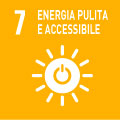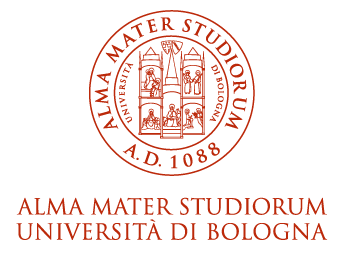- Docente: Marco Bandini
- Crediti formativi: 6
- SSD: CHIM/06
- Lingua di insegnamento: Inglese
- Moduli: Marco Bandini (Modulo 1) Andrea Gualandi (Modulo 2)
- Modalità didattica: Lezioni in presenza (totalmente o parzialmente) (Modulo 1); Lezioni in presenza (totalmente o parzialmente) (Modulo 2)
- Campus: Bologna
- Corso: Laurea Magistrale in Photochemistry and molecular materials (cod. 9074)
Conoscenze e abilità da conseguire
At the end of the course the students will learn the main guidelines in order to design and to synthesize conjugated organic compounds. In particular, deep knowledge in the fields of “Nobel Prize “ transformations such as metal catalyzed cross-coupling reactions and metathesis reactions (i.e. ene-ene, ene-yno, yno-yno) will be acquired along the course. During the practical lessons the student will face the multi-step synthesis of a conjugated organic compound based on aromatic systems and the corresponding analytical/spectroscopic characterization.
Contenuti
o student that plans to attend the course, in order to get maximum comprehension of the topics of the lessons must be confident with the programmes of the basic organic chemistry with particular concern to the synthesis and functionalization of the main organic functional groups (from alkanes to carboxylic derivate). The text book “Organic Chemistry” by J. Clayden, N. Greeves, S. Warren is kindly suggested. Moreover, the student should already be practice with common lab glass-ware, with the setting of an organic reaction, monitoring of the process by means of TLC and classic work-up. Finally, the student is supposed to known how to get structural information on a title organic species via NMR-spectroscopy 1H and 13C.
1. Organic materials for opto-electronic
1.1. Basis of main p-conjugated polymeric
1.2. The electroluminescence
1.3. Structure/propriety relationships of the conjugated organic compounds;
1.3.1. Steric effects
1.3.2 Electronic effects
1.4 Organic compounds with blue-emission
1.4.1 Poly-fluorene
2. Synthesis and functionalization of heteroaromatic compounds
2.1. Pyridine: resonance formula and dipole moment
2.2. Quinoline: resonance formula and dipole moment
2.3. Azoles: resonance formula and dipole moment
2.4. Pyrrole: resonance formula and dipole moment and electronic analogy with Cp anion.
2.5 Furan and thiophene: resonance formula and dipole moment
2.6 Main electron-rinc heteroaromatic benzo-fused: resonance formula and dipole moment
2.7 Reactivity of pyridine towards electrophilic reactions
2.8 Electrophilic substitution of quinoline to the C atom
2.9 Regiochemistry of the SEAr in biaryl compounds
2.10 Acidity of the NH groups in azoles and analogoues
2.11 Lithiation of aromatic 5 and 6-membered rings. Activation of the C-H
2.12 Lithiation of aromatic 5 and 6-membered rings: halogen exchange
2.13 Radical halogenation (NBS) of electron-rich aromatic compounds
2.14 Synthesis of aryl-boronic, aryl-sylane and aryl stannane compounds
3. Pd-catalyzed cross-coupling reactions
3.1 The Suzuki-Miyaura reactions
3.1.1 Scope, limitations and mechanistic details
3.2 The Hiyama reaction
3.2.1 Scope, limitations and mechanistic details
3.3 The Stille reaction
3.3.1 Scope, limitations and mechanistic details
3.4 The Mirozoki-Heck reaction
3.4.1 Scope, limitations and mechanistic details
3.5 The Hiyama reaction
3.5.1 Scope, limitations and mechanistic details
3.6 The Buchwald-Hartwig reaction
3.6.1 Scope, limitations and mechanistic details
3.7 The Cassar-Sonogashira reactop
3.7.1 Scope, limitations and mechanistic details
4. The metathesis reaction
4.1 The metathesis ene-ene
4.1.1 Metallo-carbenes: synthesis and properties
4.1.2 The Chauvin' postulate
4.1.3 The Grubb's catalysts (I and II generation) and the Grubbs-Hoveyda catalysts
4.1.4 Types of metathesis reactions
4.1.5 Dissociative mechanism: the ring-closing case
4.1.6 The cross-metathesis reaction
4.1.7 Thermodynamic aspects in the RCM
4.1.8 Application of the RCM to the synthesis of polyfunctionalized compounds
4.2 The metathesis ene-yno
4.2.1 The reaction machinery
4.2.2 Application of the ene-yno to the synthesis of polyfunctionalized compounds
4.3 The metathesis yne-yno
4.3.1 Reaction machinery
4.3.2 Application of the ene-yno to the synthesis of stereochemically defined unsaturated macrocycles
4.3.3 Application of the ene-yno to the synthesis of functionalized poly-acenes
5. Laboratory work
5.1 Review of the main techniques in the organic chemistry laboratory (e.g. working under inert atmosphere, TLC, flash chromatography)
5.2 Review of structure determination by NMR and mass spectroscopy.
5.3 Sequential multi-step synthesis and characterization of an organic dyes with emission properties.
5.4 Sequential multi-step synthesis and characterization of a luminescent iridium complex.
Testi/Bibliografia
Handbook of MetathesisEditor(s):
- Robert H. Grubbs
- Anna G. Wenzel
- Daniel J. O'Leary
- Ezat Khosravi
Metodi didattici
Theoretical lessons 24 hs (use of black-board, and projection of slides via ppt presentations).
Attendance: The course is characterized by a compulsory attendance to the practical experiences (75% of the lab lessons).
“As concerns the teaching methods of this course unit, all students must attend Module 1, 2 [https://www.unibo.it/en/services-and-opportunities/health-and-assistance/health-and-safety/online-course-on-health-and-safety-in-study-and-internship-areas] online, while Module 3 on health and safety is to be attended in class. Information about Module 3 attendance schedule is available on the website of your degree programme”
Modalità di verifica e valutazione dell'apprendimento
The student will be allowed to face the examination only if in possession of documented attendance of the practical lessons (75% of the total).
Laboratory part: the assessment of the learning outcomes of the student is performed by means of an oral presentation regarding the laboratory experience with duration of 20 min. max. During the presentation the student will have to comment on the laboratory experience, with particular emphasis on the spectral characterization of the products obtained and the problems encountered during the experience. The teacher will ask questions aimed at establishing the knowledge acquired by the student.
Theoretical part: The assessment of the learning outcomes of the student is performed at the end of the course by means of oral examination with duration of 30 min. The oral examination generally begins with the structural analysis of one title molecule recently appeared in the literature. The student will be asked to propose a possible synthetic sequence for its preparation. Main disconnections will be related to the reactivity discussed during the course.
The final mark of the exam will be expressed in 30th and it will derive for the assessment of the oral exam (max: 22/30), the presentation related to the module of Laboratory (max 8/30) and personal assessment of the candidate during the working time in the laboratory classes (3/30). Laude could be assigned in case of exceptional preparation and with a final and total mark not less than 32.
Strumenti a supporto della didattica
The didactic material will be provided by the Professor to the students in electronic format. Moreover, all the literature articles describing the exercises discussed during the class-room will be available. All in one, the students will be asked to prepare the examination by studying notes taken during the classes.
Orario di ricevimento
Consulta il sito web di Marco Bandini
Consulta il sito web di Andrea Gualandi
SDGs

L'insegnamento contribuisce al perseguimento degli Obiettivi di Sviluppo Sostenibile dell'Agenda 2030 dell'ONU.
